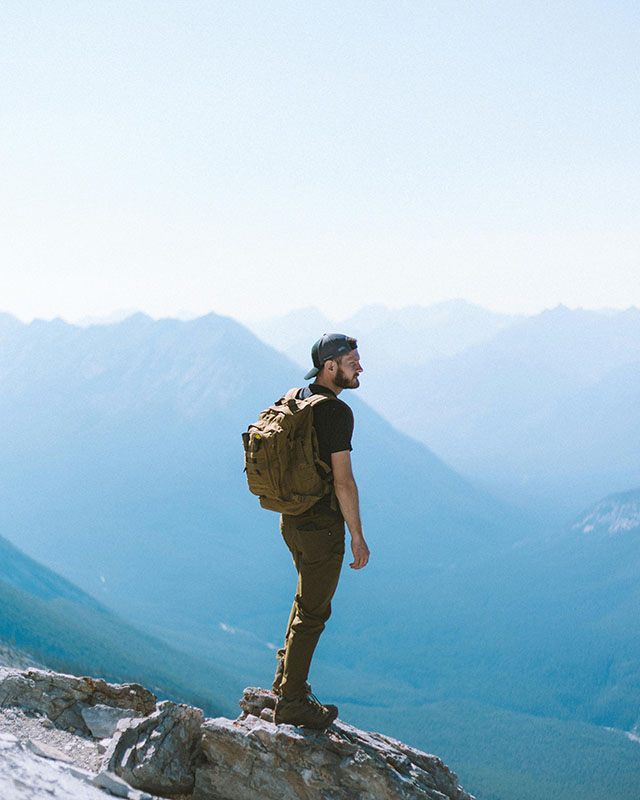Solo Adventurer’s Checklist and Getting Your Australian Visa, Travel Cover and On-The-Ground Safety Tips

Travelling alone in Australia offers something special: the freedom to explore at your own rhythm, on your own terms. But before setting out across coastlines, rainforests or the desert heart, a little preparation can turn a good trip into a great one.
This guide walks through what solo travellers really need, from the paperwork that opens the door to the safety habits that keep you moving confidently. With the right mindset and a solid plan, every day on the road becomes its own small victory.
Getting Your Entry Right
Before the surf, the sunsets and the open highways, there’s the visa. Most solo visitors need an Electronic Travel Authority (ETA) or Visitor Visa. Both are easy enough to apply for online, but small mistakes can cause long delays.
Double-check every detail, including name spelling, passport number and travel dates. Keep clear digital copies and printed versions of your visa, insurance papers and accommodation confirmations. It’s a simple preparation that transforms border control into a smooth start.
If it’s your first time entering Australia, expect to be asked questions about your stay. Being ready with your itinerary and proof of funds helps the process move smoothly. Good planning builds confidence and sets a calm tone for the journey ahead.
Understanding the Schengen Visa Difference
If you’ve travelled through Europe, the Schengen visa might sound familiar: one document, multiple countries. Australia works differently. Each country in this region has its own entry rules. Therefore, if you’re travelling from Australia to New Zealand or Fiji, separate applications are required.
This difference catches many travellers by surprise. The key is to plan your route early. Map out flights and connections in advance, especially when travelling through Australian airports on your way to another destination. Precise planning keeps travel surprises pleasant instead of stressful.
Sorting Out Travel Insurance
Australia’s landscape is wild and breathtaking, but it’s also unpredictable. That’s why travel insurance is more than a formality; it’s your safety net. Choose coverage that includes medical treatment, lost belongings and trip cancellations.
Look for policies that cover:
- Emergency evacuation and hospital costs
- Activities like hiking, snorkelling or surfing
- Lost baggage and theft protection
- 24-hour emergency support
It’s worth reading the fine print. Some plans exclude adventure sports or specific areas of interest. Match the coverage to the kind of trip you’re planning. Whether you’re diving in Queensland or driving through the outback, witty coverage removes stress and lets you enjoy the ride.
Keep a digital copy of your insurance card on your phone. Save the hotline number in your contacts. These are small, practical steps that bring peace of mind when travelling solo.
Staying Safe on the Ground
Australia is one of the world’s most secure holiday spots, but knowledge is power. Plan your travel arrangements well in advance. Utilise the respected ride share apps and/or taxis. If venturing into the countryside, advise a staff member of your itinerary and anticipated return time.
Nature might be harsh sometimes. The heat of the desert environment, the strong rip currents near the beaches and the distances between the towns call for caution and care. Weather conditions should be checked before going outside. Water and warning signs near national parks and beaches must be strictly followed.
The wildlife is fascinating, but it’s best appreciated from a distance. The kangaroos, snakes and even the jellyfish are not things you want to get up close and personal with.
Online security: Consider public Wi-Fi a transient connection. Never log in to online banking, personal accounts or other sensitive services using public Wi-Fi. Store backup numbers for important contacts who are not online, in case you lose your phone. Preparedness gives you confidence that you are ready for small risks before they evolve.
Connecting and Travelling with Respect
Travelling solo doesn’t mean travelling alone. Locals are open, curious and often happy to share stories or directions. A simple “g’day” can turn into a genuine conversation or a helpful tip about a hidden café.
Respect also defines a good traveller. Australia’s culture seamlessly blends modern city life with its rich Indigenous heritage. Learn the meaning behind local traditions and when visiting sacred or protected areas, follow the guidelines posted. A little cultural curiosity shows care and earns lasting goodwill.
Staying connected helps both safety and enjoyment. Local SIM cards and eSIMs give reliable data for maps, messages and updates. Apps like maps.me or Google Maps offline mode are great for road trips or hiking trails. Joining a group activity or short tour can also break up the solitude and lead to new friendships.
The Bottom Line
Travelling alone across Australia means that it’s not a matter of seeing this and that and then moving on to the next place. It’s also a matter of doing whatever you want and being prepared for whatever might happen. The planning and preparation work that goes into the trip might be mundane, but it provides freedom when you are actually travelling.
With a mind that remains considerate, respectful and hungry for knowledge, every moment, whether it’s a quiet day at the beach or a wild nightlife experience, becomes a story worth telling. Australia welcomes and rewards those who are ready, flexible and a little bit adventurous.
|